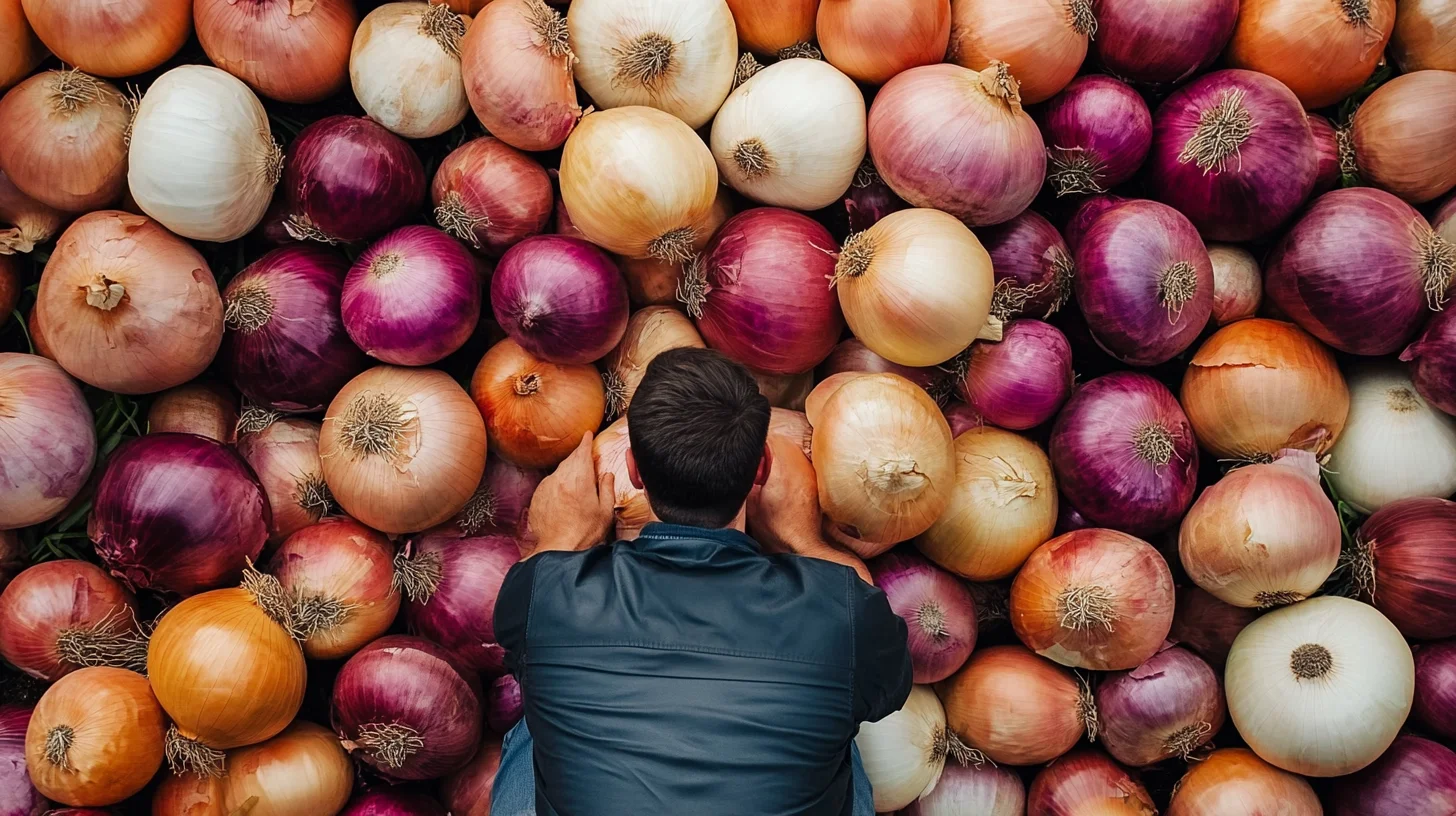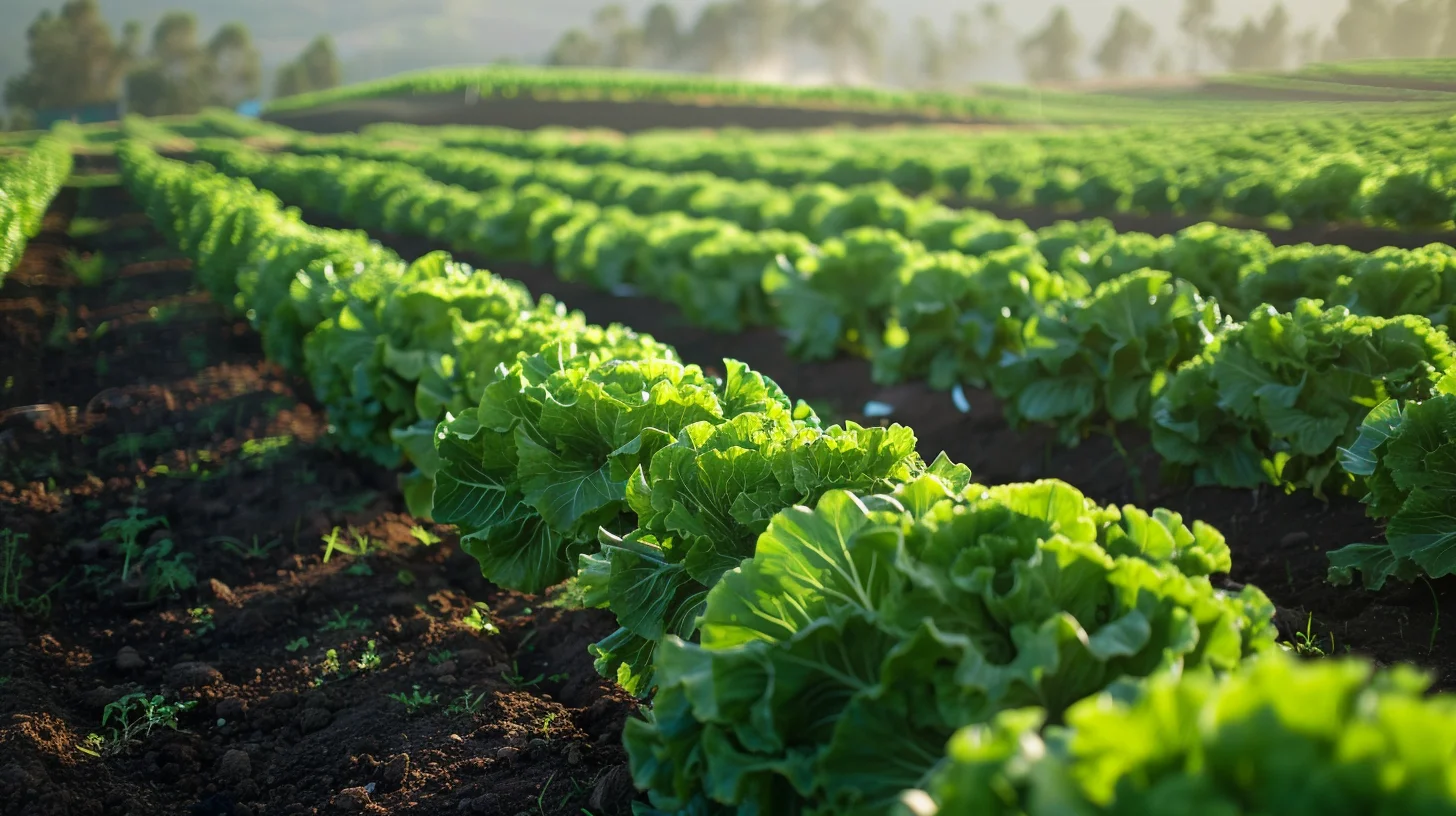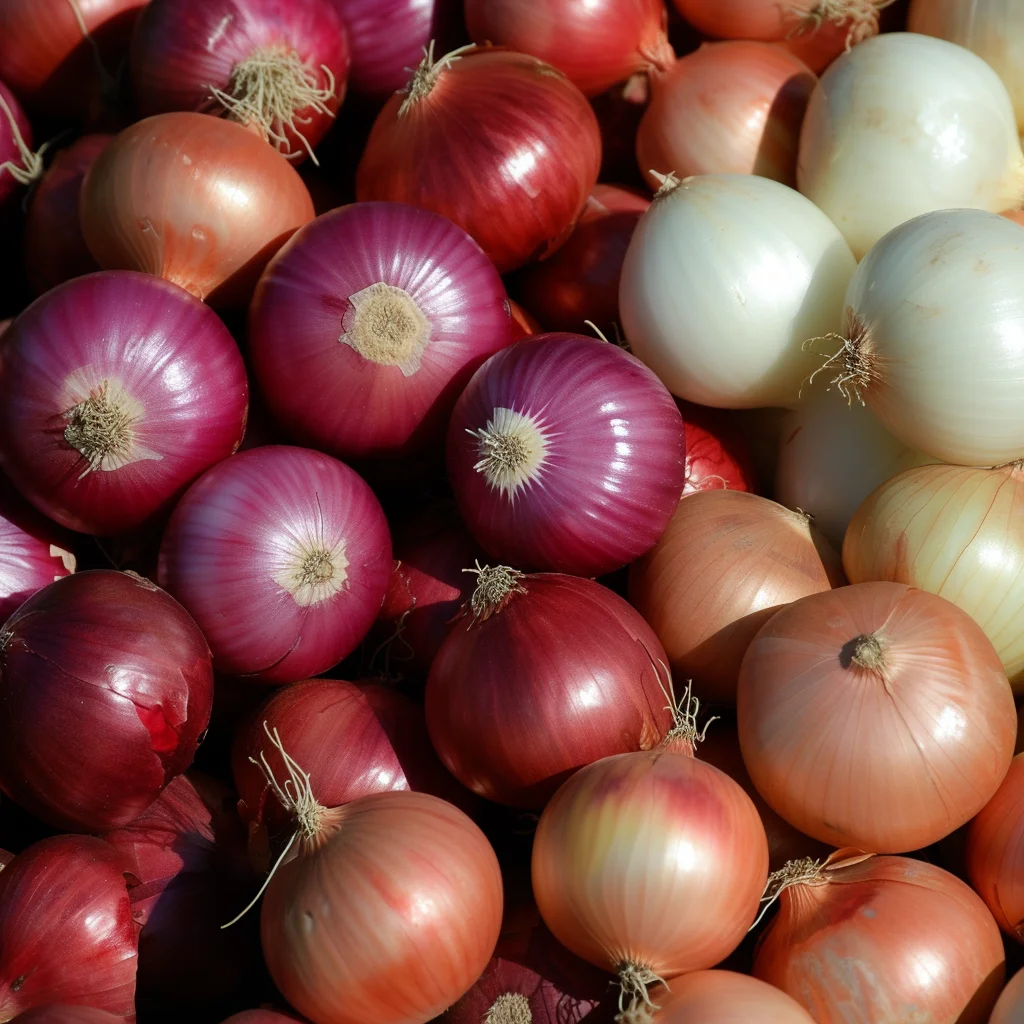Table of Contents
Onions are a staple in kitchens worldwide, adding flavor and nutrition to countless dishes. But have you ever wondered just how much of this pungent vegetable is produced on a global scale? Let’s dive into the fascinating world of global onion production and uncover some eye-watering facts.
The Big Picture: Global Onion Production Statistics
The world’s appetite for onions is truly staggering. Annually, global onion production reaches a whopping 105 billion pounds. To put that into perspective, if we divided that equally among the world’s population, each person would be consuming about 14 pounds of onions per year. However, actual consumption varies widely by region and culture.
When it comes to onion varieties, yellow onions dominate the market, making up an impressive 75% of all cultivated onions worldwide. Red and white onions round out the remaining quarter, each with their unique culinary applications and flavor profiles.
Top Onion Producing Countries
The global onion production landscape is dominated by a handful of countries, with Asia taking the lead. Let’s look at the top producers:
| Rank | Country | 2020 Production (1,000 tons) |
|---|---|---|
| 1 | India | 26,738 |
| 2 | China | 23,660 |
| 3 | United States | 3,821 |
| 4 | Egypt | 3,199 |
| 5 | Turkey | 2,280 |
India, the world’s top onion producer, churns out a staggering 26,738 metric tons annually. Indian onions are renowned for their pungency and are cultivated year-round, making them a constant presence in global markets.
China follows closely, producing 23,660 metric tons each year. What’s remarkable about China’s onion production is the sheer scale of land dedicated to it – a whopping 9.2 million acres.
The United States ranks third, with a production of 3,821 metric tons. While this is significantly lower than the Asian giants, it’s still an impressive figure that meets much of the domestic demand. Interestingly, Americans consume nearly 19 pounds of onions per person annually, which is above the global average.
Factors Influencing Global Onion Production
Several factors play crucial roles in determining onion production levels:
- Climate and Geography: Onions thrive in temperate climates with well-drained soils. Countries with diverse climatic zones, like India and China, can produce onions year-round.
- Agricultural Practices: Modern farming techniques, including precision agriculture and improved irrigation systems, have boosted yields in many countries.
- Market Demand: The increasing global appetite for onions, driven by population growth and changing dietary habits, continues to push production upwards.
- Government Policies: Agricultural subsidies and export regulations can significantly impact a country’s onion production capacity.
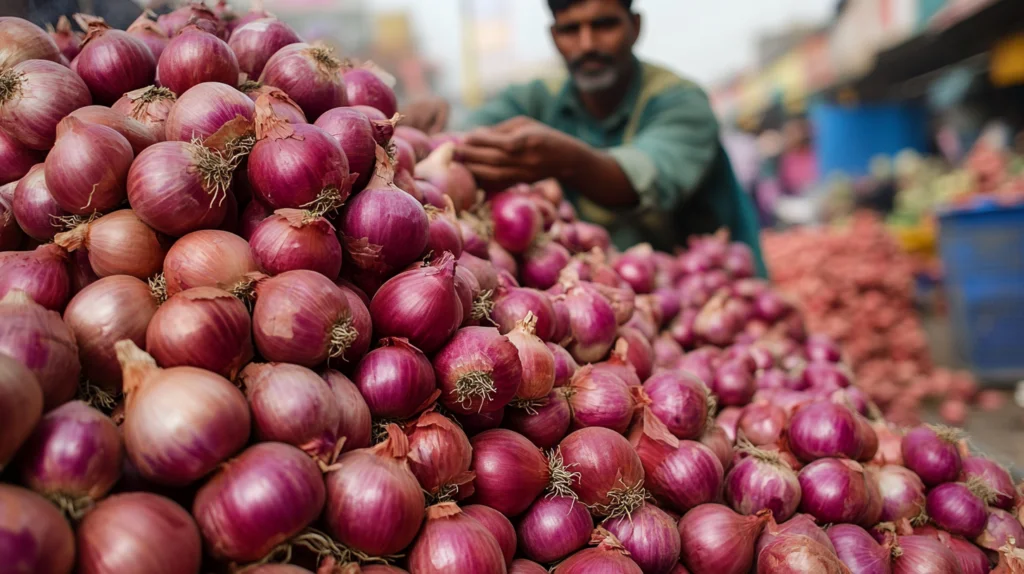
The Onion Production Process
Growing onions is a labor-intensive process that requires careful attention at every stage. Here’s a brief overview:
- Seed Selection: Farmers choose varieties suited to their climate and market demands.
- Soil Preparation: Well-drained, fertile soil is essential for healthy onion growth.
- Planting: Seeds are sown directly or transplanted as seedlings.
- Growing Period: Onions typically take 3-4 months to mature.
- Harvesting: Timing is crucial to ensure optimal flavor and storage life.
- Curing: Freshly harvested onions are dried to improve storage longevity.
Modern farming techniques have significantly boosted global production. For instance, drip irrigation systems have improved water efficiency, while pest-resistant varieties have reduced crop losses.
Global Onion Trade and Export
The onion trade is a significant part of the global vegetable market. As of 2024, the major onion exporters include:
- Pakistan (40.61% market share, $128.48 Million)
- India (31.77%, $100.51 Million)
- Uzbekistan (6.39%, $20.21 Million)
- Peru (5.93%, $18.75 Million)
- Turkey (5.78%, $18.28 Million)
These countries leverage their production capabilities to meet international demand, with each focusing on specific market niches or quality attributes to maintain their competitive edge.
Challenges in Global Onion Production
Despite the impressive production figures, onion farmers worldwide face several challenges:
- Climate Change: Unpredictable weather patterns are affecting crop yields and quality.
- Pest and Disease Management: Onions are susceptible to various pests and diseases, requiring constant vigilance.
- Storage and Transportation: Onions are perishable, and improper storage can lead to significant losses.
- Market Price Fluctuations: Onion prices can be highly volatile, affecting farmers’ incomes.
- Input Costs: Rising costs of fertilizers, pesticides, and fuel impact production profitability.
The Future of Global Onion Production
Looking ahead, the onion industry is poised for growth and innovation:
- Technological Advancements: Precision agriculture and AI-driven farming techniques are expected to boost yields and reduce waste.
- Sustainable Practices: There’s a growing focus on organic onion production and environmentally friendly farming methods.
- New Varieties: Researchers are developing onion varieties with enhanced disease resistance and longer shelf lives.
- Shifting Production Regions: Climate change may lead to new areas becoming suitable for onion cultivation.
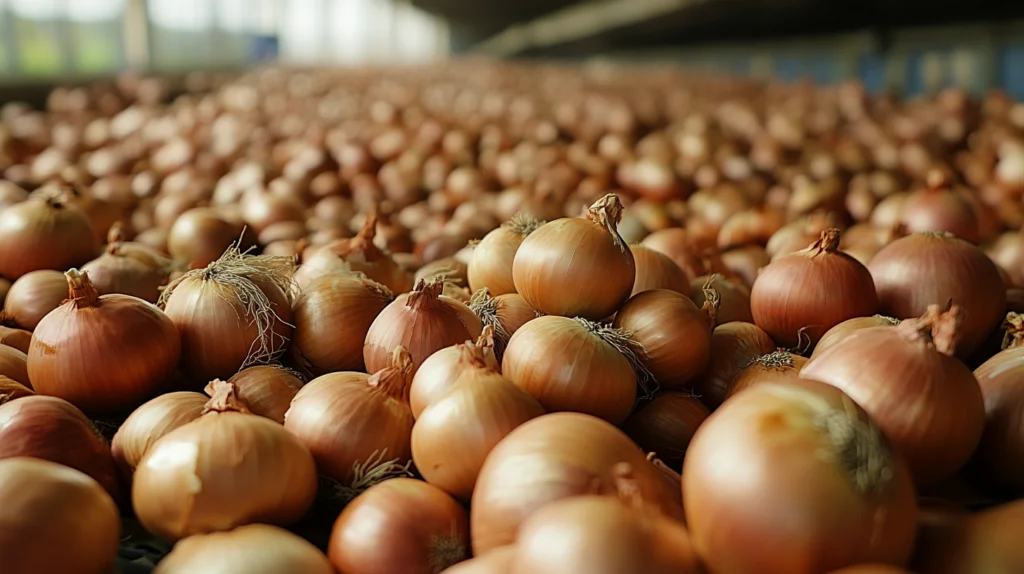
Conclusion
Global onion production is a vast and complex industry, with countries around the world contributing to the 105 billion pounds produced annually. From India’s pungent varieties to China’s massive cultivation areas, onions continue to be a crucial crop in global agriculture. As we face challenges like climate change and evolving consumer preferences, the onion industry will need to adapt and innovate to meet future demands.
Whether you’re a culinary enthusiast or simply curious about agricultural trends, understanding global onion production offers fascinating insights into one of the world’s most popular vegetables. So the next time you chop an onion for your favorite recipe, remember the incredible journey it took from field to kitchen, and the massive global industry behind this humble bulb.

